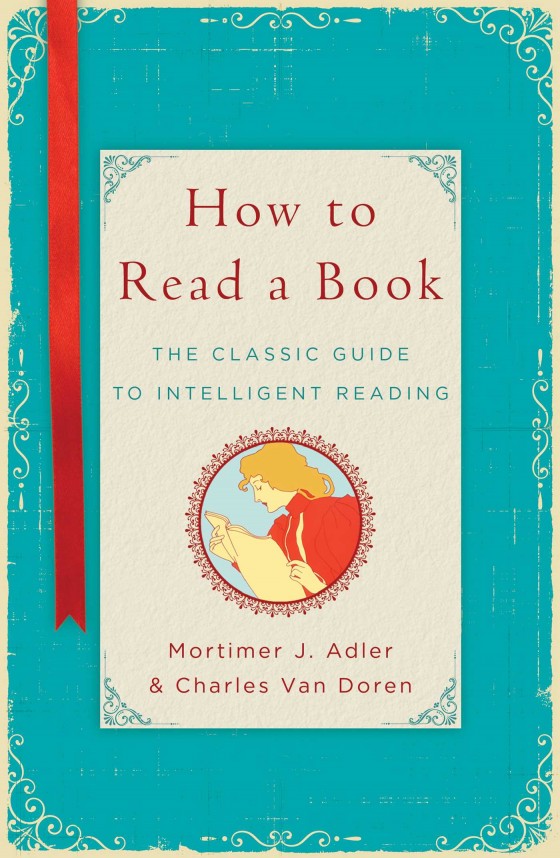The headline is a quote from Peter Kreeft, professor of philosophy at Boston College since 1965, in his book Socratic Logic:
On the basis of over 40 years of full time college teaching of almost 20,000 students at 20 different schools, I am convinced that one of the reasons for the steep decline in students’ reading abilities is the decline in the teaching of traditional logic.
Mortimer Adler’s classic How to Read a Book is based on the traditional common-sense logic of the “three acts of the mind” [simple apprehension, judging, reasoning]. . . .
If I were a college president, I would require every incoming freshman to read Adler’s book and pass a test on it before taking other courses.
Mortimer Adler—with co-author Charles Van Doren—suggests there are three main stages for analytical reading, with fifteen major rules for reading well.
I have reproduced an outline below.
Stage 1: What Is the Book About as a Whole?
Rule 1. You must know what kind of book you are reading, and you should know this as early in the process as possible, preferably before you begin to read. / Classify the book according to kind and subject matter. (p. 60)
Rule 2. State the unity of the whole book in a single sentence, or at most a few sentences (a short paragraph). State what the whole book is about with the utmost brevity. (pp. 75-76)
Rule 3. Set forth the major parts of the book, and show how these are organized into a whole, by being ordered to one another and to the unity of the whole. / Enumerate its major parts in their order and relation, and outline these parts as you have outlined the whole. (p. 76)
Rule 4. Find out what the author’s problems were. / Define the problem or problems the author has tried to solve. (p. 92)
Stage 2: What Is Being Said in Detail, and How?
Rule 5. Find the important words and through them come to terms with the author. / Come to terms with the author by interpreting his key words. (p. 98)
Rule 6: Mark the most important sentences in a book and discover the propositions they contain. / Grasp the author’s leading propositions by dealing with his most important sentences. (p. 120)
Rule 7: Locate or construct the basic arguments in the book by finding them in the connections of sentences. / Know the author’s arguments, by finding them in, or constructing them out of, sequences of sentences. (p. 120)
Rule 8: Find out what the author’s solutions are. / Determine which of his problems the author has solved, and which he has not; and as to the latter, decide which the author knew he had failed to solve. (p. 135)
Stage 3: Is It True? What of It?
General Maxims of Intellectual Etiquette
Rule 9: You must be able to say, with reasonable certainty, “I understand,” before you can say any one of the following things: “I agree,” or “I disagree,” or “I suspend judgment.” / Do not begin criticism until you have completed your outline and your interpretation of the book. (pp. 142-143)
Rule 10: When you disagree, do so reasonably, and not disputatiously or contentiously. (p. 145)
Rule 11: Respect the difference between knowledge and mere personal opinion, by giving reasons for any critical judgment you make. (p. 150)
Special Criteria for Points of Criticism
12. Show wherein the author is uninformed.
13. Show wherein the author is misinformed.
14. Show wherein the author is illogical.
15. Show wherein the author’s analysis or account is incomplete.



















